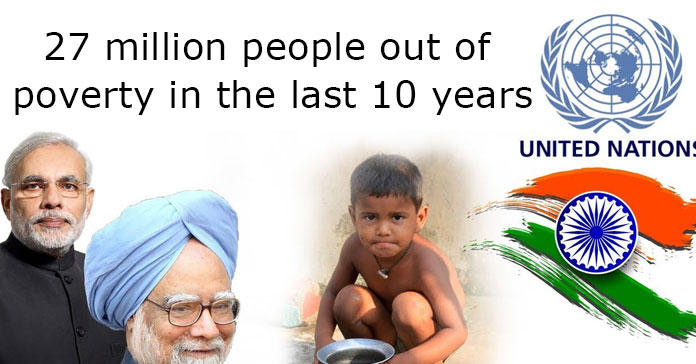Table of Contents

. THE 2018 MPI
- Paints a picture of multidimensional poverty across 104 developing countries, covering 74 percent of the global population.
- Identifies the ways in which people are being left behind by looking into three key dimensions – health education and living standards – through 10 different indicators.
- Allows comparisons across countries.
- Looks into disparities within countries disaggregating by age groups, urban/rural areas and subnational regions. ABOUT MPI Jointly developed by the United Nations Development Programme (UNDP) and the Oxford Poverty and Human Development Initiative (OPHI) at the University of Oxford, the 2018 global MPI casts light on who is multidimensionally poor, where do they live and how they are deprived.
MULTIDIMENSIONAL POVERTY INDEX
Multidimensional Poverty Index: India halves poverty in 10 years A new report shows the percentage of Indians living in poverty is half what it was a decade ago. But child poverty around the world is still rife, affecting nearly two-thirds of those under 18 in sub-Saharan Africa.
MULTIDIMENSIONAL POVERTY INDEX 2018
- In the decade between 2005-06 and 2015-16, India has halved its Multidimensional Poverty Index (MPI) from 54.7 per cent to 27.5 per cent
- According to MPI 2018 released by the United Nations Development Programme (UNDP) and the Oxford Poverty and Human Development Initiative, there are 271 million fewer poor people in India in this period
FINDINGS OF THE REPORT
-
- 364 million Indians continue to experience acute deprivations in health, nutrition, schooling and sanitation
- About 196 million MPI poor people in India, accounting for more than half of all multidimensionally poor in India, live in the four states of Bihar, Jharkhand, Uttar Pradesh and Madhya Pradesh
- Just over one in four multidimensionally poor people in India are under ten years of age
- Traditionally disadvantaged groups, in terms of castes, religions etc, continue to be the poorest though they have experienced the biggest decadal reduction in MPI
























 WhatsApp
WhatsApp